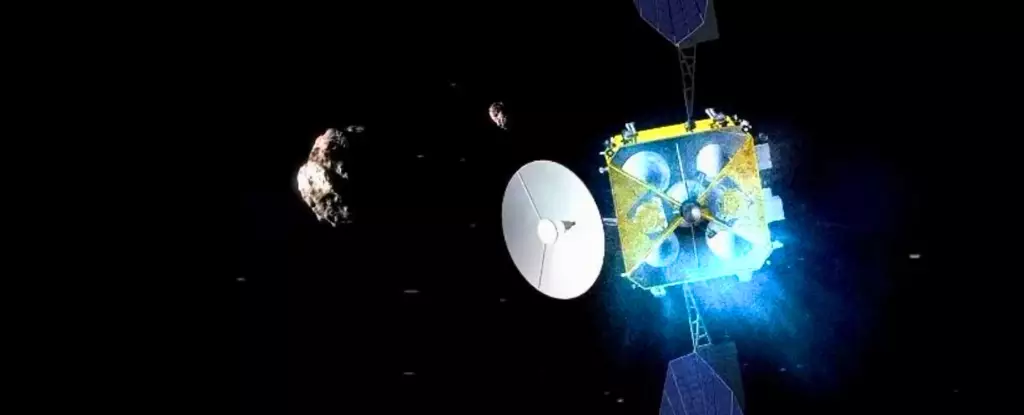On a remarkable Thursday morning, China launched its first-ever mission to retrieve asteroid samples, marking a pivotal moment in its relentless pursuit of space exploration. The launch, celebrated by the Xinhua state news agency, underscores the country’s commitment to an expansive space program, which has received considerable funding from the government. President Xi Jinping has championed this initiative, dubbing it the nation’s “space dream.” This ambitious spell of exploration is not merely about technology but symbolizes China’s thirst for scientific discovery and its determination to stake a significant claim in the realm of space exploration.
The Technical Marvel of Tianwen-2
The launch was executed with the precision that the world has come to expect from China’s aerospace endeavors. A Long March-3B rocket propelled the Tianwen-2 probe from the Xichang launch site, successfully placing it into a transfer orbit to its target, the asteroid 2016HO3. The significance of this event is manifold; it is not just another mission but a bold statement of intent. The probe, with perfect timing, deployed its solar panels with a fluid motion, a detail that the China National Space Administration (CNSA) proudly confirmed as a success. This groundbreaking mission seeks not only to gather samples but also aims to explore the enigmatic comet 311P, further expanding China’s cosmic ambitions.
Asteroid 2016HO3: A “Living Fossil”
The asteroid 2016HO3, discovered in 2016 by Hawaiian scientists, presents a unique opportunity for researchers. Approximately 40 to 100 meters in diameter, this celestial object hangs in close proximity to Earth, serving as a “living fossil” that may reveal the solstitial formation of our Solar System. The materials and characteristics housed within this ancient asteroid are expected to deepen our understanding of planetary evolution, offering insights into both geology and astrophysics that are as vital as they are intriguing.
Beyond Earth’s Grasp: The Bigger Picture
China’s aspirations extend far beyond this single mission. Following the launch, officials expressed hope for groundbreaking discoveries that might redefine our understanding of the universe. The Tianwen-2 mission is projected to span roughly a decade, during which it will conduct scientific experiments that could unravel mysteries of not only asteroids but also comets that could provide crucial knowledge about the origins of our Solar System. Furthermore, by positioning itself within the competitive landscape of space exploration—following the footsteps of past spacefaring giants like the U.S. and the Soviet Union—China solidifies its status as a global leader in space achievements.
The Jewel in the Crown: Tiangong Space Station
Additionally, China’s Tiangong space station stands as the centerpiece of its lofty ambitions. Recently, the Shenzhou-20 mission successfully transported astronauts to the station for what will be a grueling six-month expedition. This continued human presence in orbit not only marks a significant achievement but also acts as a testbed for technologies and life-support systems fundamental for future exploration missions, including the one planned to the Moon this decade.
China’s space exploration narrative, enriched by the launch of the Tianwen-2 and the operations of Tiangong, epitomizes a nation at the forefront of scientific inquiry and exploration, stirring excitement and optimism for the future of humanity’s place in the cosmos.

